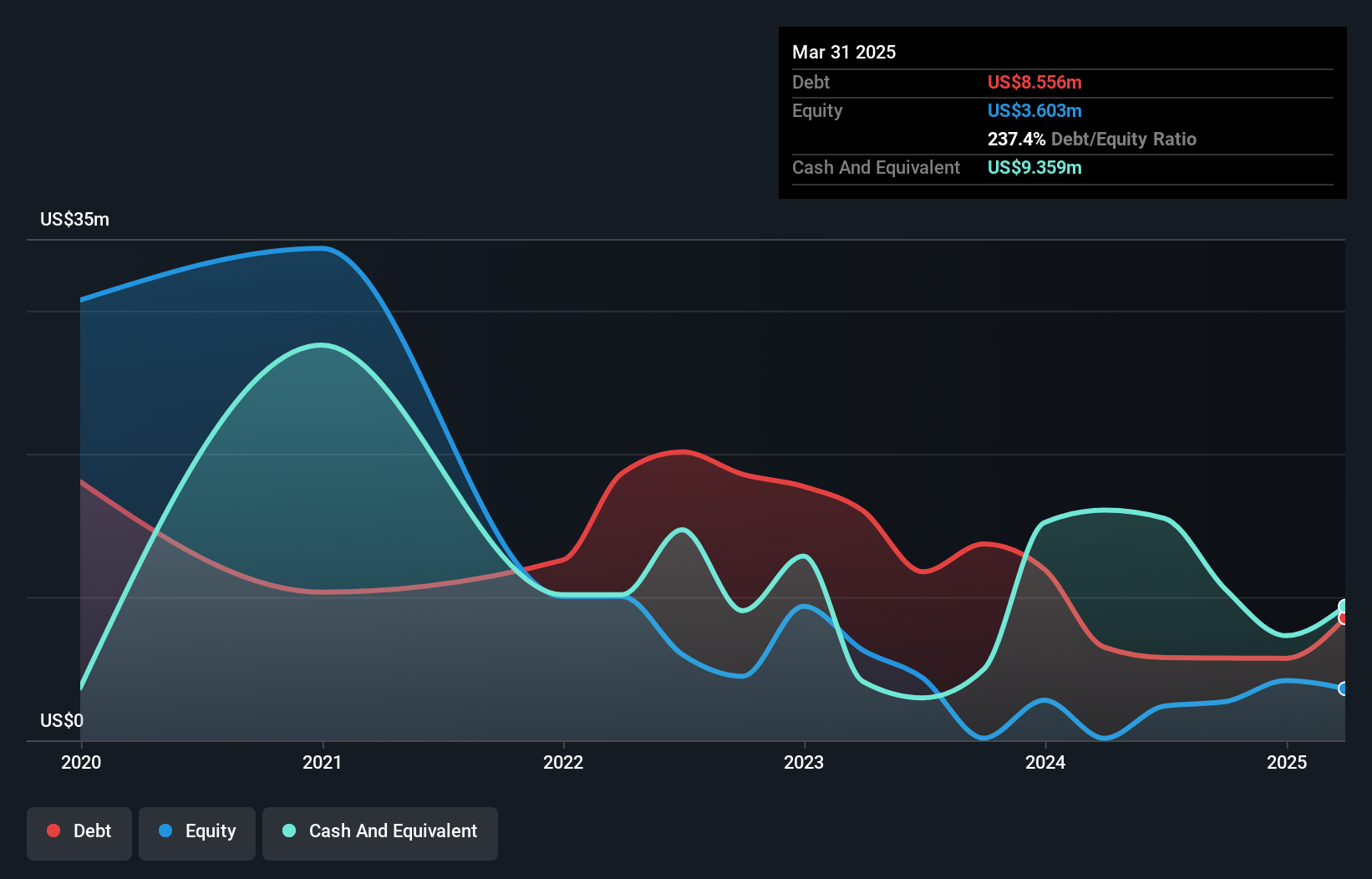David Iben put it well when he said, 'Volatility is not a risk we care about. What we care about is avoiding the permanent loss of capital.' It's only natural to consider a company's balance sheet when you examine how risky it is, since debt is often involved when a business collapses. As with many other companies Snail, Inc. (NASDAQ:SNAL) makes use of debt. But the more important question is: how much risk is that debt creating?
What Risk Does Debt Bring?
Generally speaking, debt only becomes a real problem when a company can't easily pay it off, either by raising capital or with its own cash flow. If things get really bad, the lenders can take control of the business. While that is not too common, we often do see indebted companies permanently diluting shareholders because lenders force them to raise capital at a distressed price. Of course, the upside of debt is that it often represents cheap capital, especially when it replaces dilution in a company with the ability to reinvest at high rates of return. The first step when considering a company's debt levels is to consider its cash and debt together.
What Is Snail's Net Debt?
As you can see below, at the end of March 2025, Snail had US$8.56m of debt, up from US$6.49m a year ago. Click the image for more detail. However, its balance sheet shows it holds US$9.36m in cash, so it actually has US$803.6k net cash.

How Strong Is Snail's Balance Sheet?
According to the last reported balance sheet, Snail had liabilities of US$36.8m due within 12 months, and liabilities of US$24.1m due beyond 12 months. Offsetting these obligations, it had cash of US$9.36m as well as receivables valued at US$10.8m due within 12 months. So its liabilities total US$40.7m more than the combination of its cash and short-term receivables.
This is a mountain of leverage relative to its market capitalization of US$51.7m. This suggests shareholders would be heavily diluted if the company needed to shore up its balance sheet in a hurry. Despite its noteworthy liabilities, Snail boasts net cash, so it's fair to say it does not have a heavy debt load!
Check out our latest analysis for Snail
It was also good to see that despite losing money on the EBIT line last year, Snail turned things around in the last 12 months, delivering and EBIT of US$2.0m. The balance sheet is clearly the area to focus on when you are analysing debt. But it is future earnings, more than anything, that will determine Snail's ability to maintain a healthy balance sheet going forward. So if you're focused on the future you can check out this free report showing analyst profit forecasts.
Finally, a business needs free cash flow to pay off debt; accounting profits just don't cut it. While Snail has net cash on its balance sheet, it's still worth taking a look at its ability to convert earnings before interest and tax (EBIT) to free cash flow, to help us understand how quickly it is building (or eroding) that cash balance. Over the last year, Snail saw substantial negative free cash flow, in total. While that may be a result of expenditure for growth, it does make the debt far more risky.
Summing Up
Although Snail's balance sheet isn't particularly strong, due to the total liabilities, it is clearly positive to see that it has net cash of US$803.6k. So while Snail does not have a great balance sheet, it's certainly not too bad. There's no doubt that we learn most about debt from the balance sheet. But ultimately, every company can contain risks that exist outside of the balance sheet. For example, we've discovered 2 warning signs for Snail that you should be aware of before investing here.
If you're interested in investing in businesses that can grow profits without the burden of debt, then check out this free list of growing businesses that have net cash on the balance sheet.
New: Manage All Your Stock Portfolios in One Place
We've created the ultimate portfolio companion for stock investors, and it's free.
• Connect an unlimited number of Portfolios and see your total in one currency
• Be alerted to new Warning Signs or Risks via email or mobile
• Track the Fair Value of your stocks
Have feedback on this article? Concerned about the content? Get in touch with us directly. Alternatively, email editorial-team (at) simplywallst.com.
This article by Simply Wall St is general in nature. We provide commentary based on historical data and analyst forecasts only using an unbiased methodology and our articles are not intended to be financial advice. It does not constitute a recommendation to buy or sell any stock, and does not take account of your objectives, or your financial situation. We aim to bring you long-term focused analysis driven by fundamental data. Note that our analysis may not factor in the latest price-sensitive company announcements or qualitative material. Simply Wall St has no position in any stocks mentioned.
About NasdaqCM:SNAL
Snail
Researches, develops, markets, publishes, and distributes interactive digital entertainment worldwide.
Slight risk and fair value.
Similar Companies
Market Insights
Community Narratives




